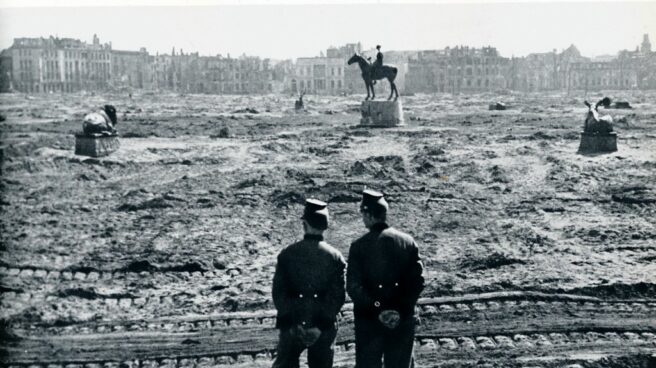

Berlin Tiergarten in 1945.
German historian Florian Huber Saves in his book promise me that you will shoot yourself one of the little-known episodes of World War II, Mass suicides in Germany after the fall of Nazismin the context of “a general sense of guilt, or rather, complicity in the crimes of the regime.”
In an interview with José Oliva (Efe Agency)Huber notes that in Germany in 1945 “many factors created a catastrophic state of mind, and people committed suicide for various reasons: fear of enemy soldiers, extreme violence (especially rape), fear of revenge for the crimes committed by the Nazis, and few prospects for the future, if the German Reich ceases to exist.
Compared to the experience of other countries that lost wars, the big difference is that the Germans simply refused to surrender, “the authorities and the military continued to fight even in the smallest towns, which made the German drama so tense and fateful.”
According to Huber’s own research, the number must be in the tens of thousands across Germany, but at the chaotic end of the war, “official statistics, documentation, and medical records have all but ceased to exist, making it impossible to give a globally accurate figure.”
promise me that you will shoot yourself (Attic of Books) estimated that in Berlin alone, 10,000 women committed suicide after being raped by Red Army soldiers; and in Demmin (northeast Germany), over 1,000 people are estimated to have committed suicide, out of a total population of 15,000.
During the latter part of the war, statistics, documentation, and medical reports “either ceased to exist or ignored the issue of suicide”, and for this reason the author had to look for “unofficial sources” scattered throughout the country. soldiers, refugees, doctors, priests or schoolchildren, as well as lists of victims compiled hastily by municipal, cemetery guards or enemy troops, as well as youthful memories of old people.
Huber points out that they used any form of suicide: hanging, shooting, stabbing, cutting, poisoning, or drowning, and many had killed their children before.
Huber points out that they used any means to commit suicide, from hanging, shooting, stabbing, cutting, poisoning, or drowning, and many of them even killed their own children beforehand, as was the case with Goebbels, who committed suicide together. his wife Magda after poisoning their six children.
In the last weeks of the war, people’s faith in Hitler waned, and for this reason his death “had nothing to do with mass suicide, and, besides, the news of his death on the radio did not even mention that he had been killed” . suicide, but that he died heroically fighting in battle, so that the Fuhrer died with the last big lie.
A German historian sees a change in the evolution of suicide in German society: “In the early years of the regime, most suicides were committed by the persecuted, Jews, communists and other minorities declared by the government to be “public enemies.” people’.'”.
That trend, he adds, reversed towards the end of the war, with more suicides among members of the Nazi Party, “political and military leaders, war criminals and other Nazi sympathizers who had something to fear when they lost the war.”
Huber says that “Contrary to what has been said for decades, most Germans knew that something terrible was happening in Eastern Europe during the war because they saw Jews disappear from society and listened to soldiers returning home from the Eastern Front. .
The author also notes that “the largest number of suicides occurred in the eastern part of Germany, where the Red Army was advancing and people were very afraid of Soviet soldiers because of propaganda.”
Following this investigation, Huber is working on a television mini-series about the phenomenon of mass suicide in Germany after the fall of Nazi Germany.
Source: El Independiente